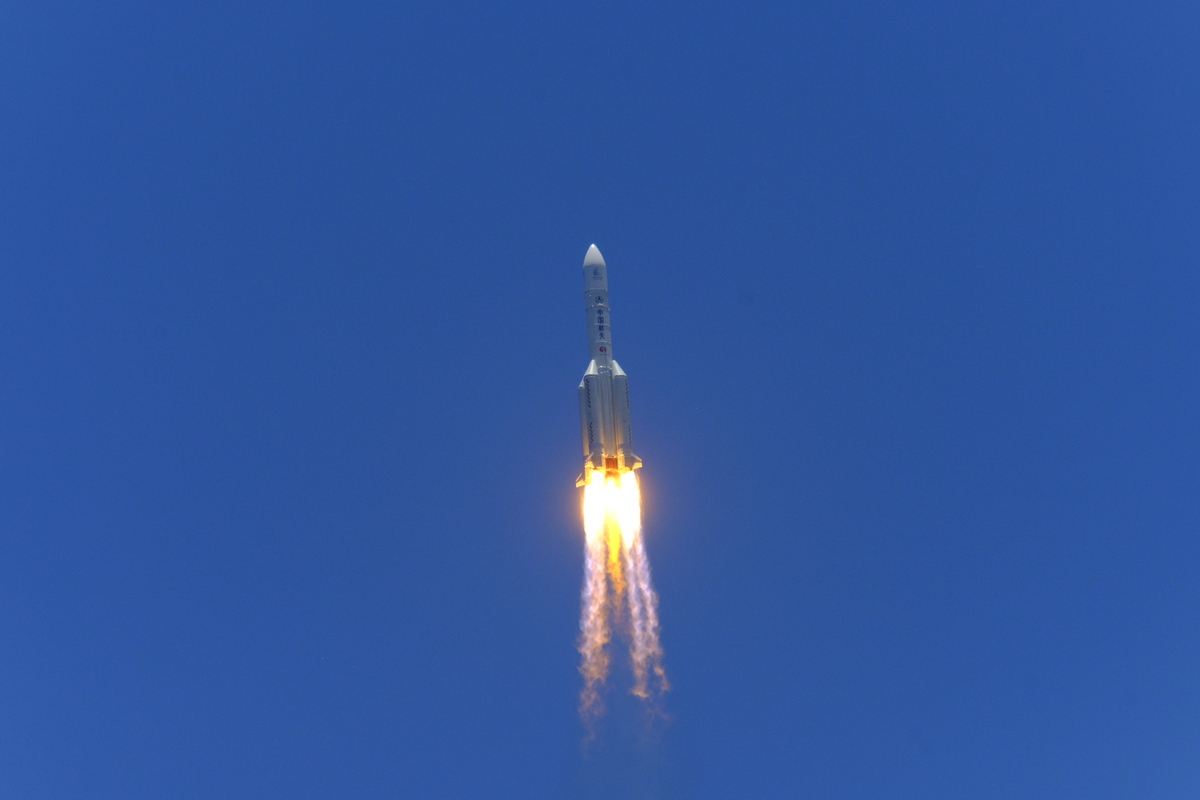China launched its first independent Mars mission on Thursday from the Wenchang Space Launch Center in Hainan province, marking the start of the nation's planetary exploration program.
As the launch sequence started at the noon, 10 engines at the bottom of the Long March 5 carrier rocket's first core stage and four boosters roared to life, generating a combined thrust of more than 1,000 metric tons to lift the gigantic vehicle and its payload, the Tianwen 1 robotic probe, into a bright blue sky dotted with white clouds from the coastal launch complex in Wenchang.

China's unmanned Mars probe, Tianwen 1, blasts off on a Long March 5 rocket in Hainan, July 23, 2020. [Photo by Guo Wenbin/China Daily]
If everything goes according to schedule, the 5-metric ton Tianwen 1, which consists of two major parts – an orbiter and a landing capsule – will travel more than 400 million kilometers in nearly seven months before getting captured by the Martian gravitational field, the China National Space Administration said.
Several mid-course and deep-space correction maneuvers will be made during the spaceflight to make sure the probe is precisely aimed at the red planet.
After the probe enters Mars orbit, it will revolve around the planet for two to three months to investigate the landing capsule's preset landing site before descending to release the landing capsule, which will gradually drop through the Martian atmosphere.

China's unmanned Mars probe, Tianwen 1, blasts off on a Long March 5 rocket in Hainan, July 23, 2020. [Photo by Guo Wenbin/China Daily]
Homestay and catering industries related to aerospace are expected to be developed in Wenchang township, the location...
China launched its first independent Mars mission on Thursday from the Wenchang Space Launch Center in Hainan provinc...
Wenchang International Aerospace City is the first coastal launch base in China, with its starting area consisting of...